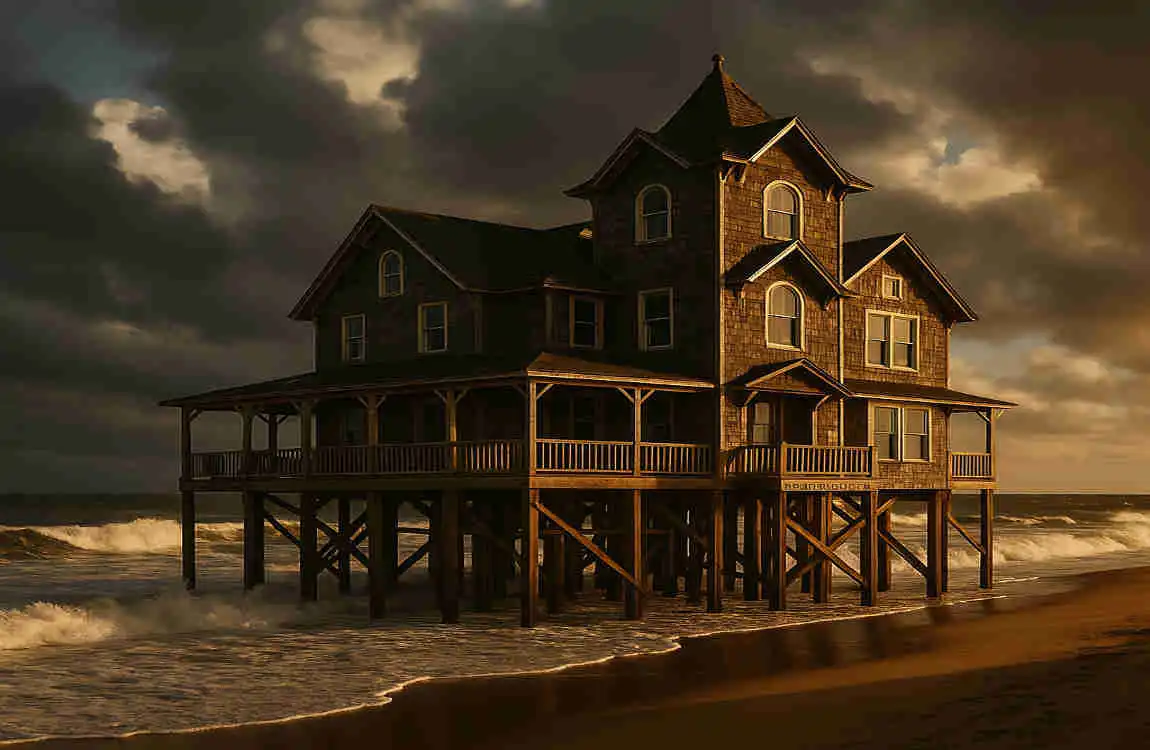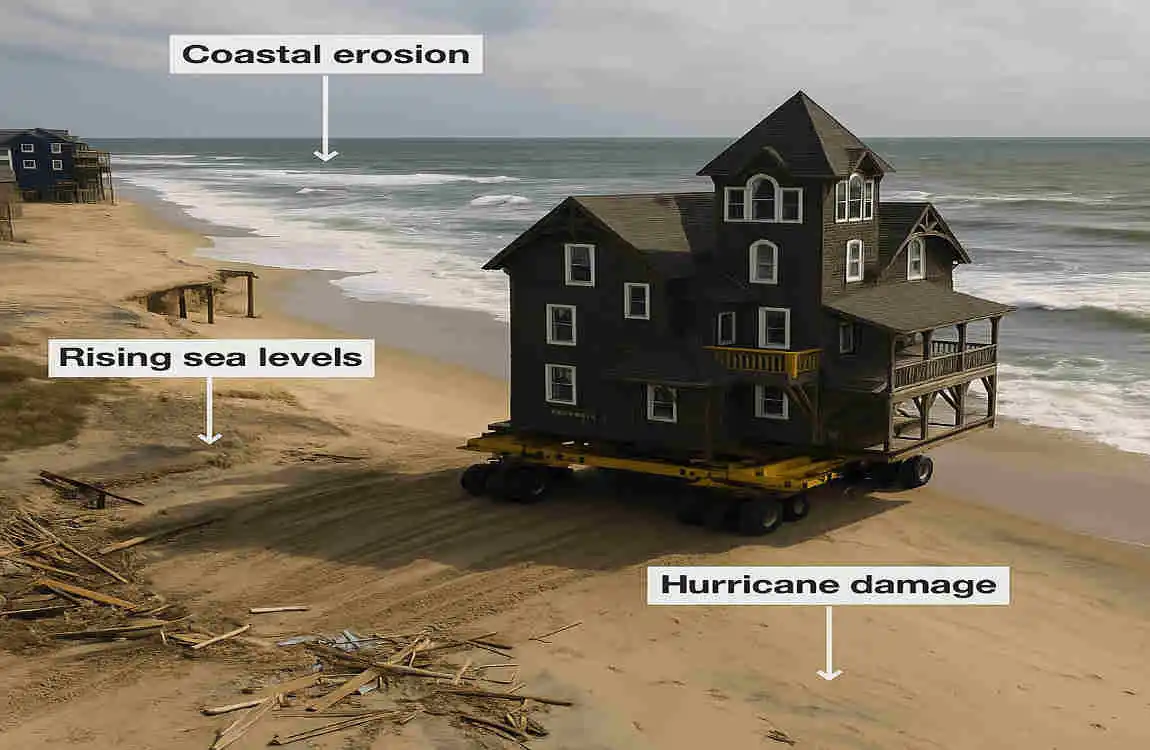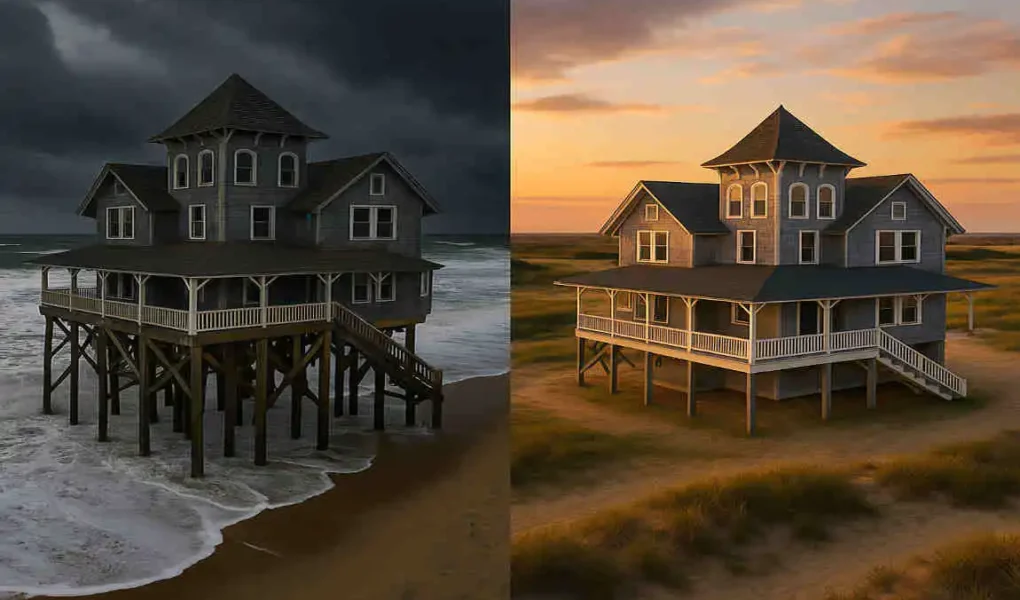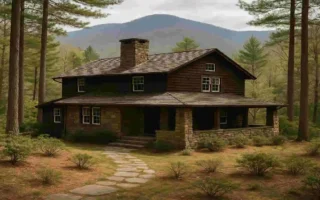The coastal beauty of Rodanthe, a small community in the Outer Banks of North Carolina, has long captured the hearts of visitors. Yet, one particular house in this quaint village has drawn international attention—the house featured in the movie “The Nights in Rodanthe.” Its iconic status and picturesque location by the beach made it a symbol of romantic escape and coastal charm. However, this famous home has faced environmental challenges that forced its relocation inland.
Background on the Rodanthe House

The Location and Its Coastal Charm
Rodanthe is a small village located on Hatteras Island, part of North Carolina’s famed Outer Banks. Known for its pristine beaches, rugged coastline, and dramatic views of the Atlantic Ocean, Rodanthe attracts thousands of visitors annually.
You may also read (the future of architecture working from home).
The Rodanthe house—featured prominently in the movie “The Nights in Rodanthe” based on Nicholas Sparks’ novel—became a cultural landmark. Originally built as a private vacation rental, the home’s romantic aesthetics and proximity to the ocean made it an instant attraction for fans of the film and beachgoers alike.
The Role of “The Nights in Rodanthe”
The house gained significant fame after its appearance in the 2008 movie. The film starred Richard Gere and Diane Lane and told a story of love, redemption, and second chances. Set against the dramatic backdrop of Rodanthe, the house became a symbol of nostalgia and romance for audiences around the world. Fans flocked to the property, making it a must-see destination for Nicholas Sparks enthusiasts.
However, despite its charm and popularity, the house faced significant challenges—ones tied closely to its precarious location by the ocean.
Environmental Challenges Facing Rodanthe
Coastal Erosion in the Outer Banks
The Outer Banks are a chain of barrier islands that stretch along North Carolina’s coast. While visually stunning, these islands are incredibly vulnerable to coastal erosion. Over time, the natural dynamics of currents, winds, and storms gradually wear away the shoreline, reshaping the islands.
For Rodanthe, erosion has become a growing concern. Beaches in the area are shrinking at an alarming rate, with some sections losing up to 14 feet of shoreline per year. This erosion places homes, roads, and infrastructure in jeopardy.
The Role of Barrier Islands
Barrier islands like Hatteras are constantly shifting due to natural processes. They act as buffers, protecting mainland areas from storm surges and high tides. However, their dynamic nature means they’re inherently unstable. When combined with human development—like beachfront homes—this instability is exacerbated.
Climate Change and Rising Sea Levels
In recent years, climate change has compounded the risks. Rising global temperatures are causing sea levels to increase, further threatening low-lying coastal areas. Rodanthe has seen more frequent flooding, stronger storms, and higher tides—all of which increase the erosion rate.
Recent Examples of Coastal Destruction
Rodanthe has become a hotspot for dramatic examples of coastal property damage. In 2022, several homes collapsed directly into the ocean due to storm-driven erosion. These events served as a wake-up call for residents and policymakers, emphasizing the urgent need to address the challenges facing the region.
Specific Reasons for Moving the Rodanthe House Inland

Immediate Threats to the House’s Safety
The Rodanthe house was originally built close to the shoreline to maximize its picturesque ocean views. However, over time, the encroaching ocean became a significant threat. Erosion had reached the home’s foundation, and the risk of collapse grew with every storm.
You may also read (the ultimate printer for your home architectural needs).
In addition to structural concerns, the property faced issues with its septic system, which was compromised by flooding and water table changes. These problems rendered the house unsafe for occupants and increased its maintenance costs.
Financial and Environmental Pressures
For the owners, maintaining the house became financially unsustainable. Insurance premiums for coastal properties skyrocketed, and repair costs mounted with each passing year.
From an environmental perspective, leaving the house in its original location posed risks to the surrounding area. Debris from collapsing homes can pollute the coastline and harm wildlife, prompting intervention from local authorities and environmental groups.
Policies Encouraging Relocation
To address these challenges, local governments have implemented policies to encourage property owners to relocate vulnerable structures. Financial incentives, such as grants and tax benefits, were offered to homeowners willing to move their houses away from the beach. These measures aim to protect both the environment and property owners from future losses.
The Process of Moving the House
Logistical Steps in Relocation
Relocating a house is no small feat, especially one as iconic as the Rodanthe house. The process involved lifting the structure off its foundation using hydraulic jacks and placing it on a series of flatbed trucks. Carefully navigating narrow roads and sandy terrain, the house was transported to a new location further inland.
Challenges in Moving a Beachfront Home
The Relocation presented several challenges, including securing permits, coordinating with local agencies, and ensuring the house remained intact during the move. Additionally, the cost of Relocation—estimated to be in the tens of thousands of dollars—was a significant consideration for the owners.
Support for Relocation Efforts
Thankfully, financial and regulatory support helped ease the burden. Local governments and conservation organizations worked to streamline the process, recognizing the importance of preserving the Rodanthe house as a cultural landmark.
Broader Implications for Beachfront Properties
Lessons from Rodanthe
The Relocation of the Rodanthe house highlights the challenges facing coastal real estate in the age of climate change. As sea levels continue to rise, more beachfront properties will face similar dilemmas.
Adapting to Coastal Environments
For homeowners, understanding the dynamics of coastal environments is crucial. Investing in sustainable building practices, such as elevated foundations and resilient materials, can help mitigate risks. Additionally, policymakers must prioritize long-term strategies for managing erosion and protecting vulnerable communities.
| Challenge | Impact | Solution |
|---|---|---|
| Coastal Erosion | Loss of land, structural instability | Relocation, beach nourishment |
| Rising Sea Levels | Increased flooding, loss of property | Elevation, better zoning regulations |
| Storm Damage | Property destruction, financial losses | Stronger building codes, proactive planning |
“The Nights in Rodanthe” Connection
Cultural Significance
The house’s connection to the movie “The Nights in Rodanthe” adds a layer of cultural importance. Fans view the house as a symbol of romance and resilience. Its story resonates on a deeper level, inspiring efforts to preserve it for future generations.
Boost to Tourism
Even after its Relocation, the Rodanthe house remains a popular tourist attraction. Visitors continue to flock to the property, drawn by its cinematic history and scenic surroundings.
Conclusion
The story of why the Rodanthe house was moved inland is one of resilience, adaptation, and environmental awareness. While the house’s Relocation was a difficult decision, it was ultimately a necessary step to preserve this cultural landmark.
As we face the realities of climate change and coastal erosion, the lessons from Rodanthe remind us of the importance of balancing heritage preservation with environmental stewardship. Whether you’re a fan of “The Nights in Rodanthe” or intrigued by the challenges of coastal living, the story of this iconic house offers valuable insights for us all.
You may also read (could casper house become a national real estate trend in 2025).




